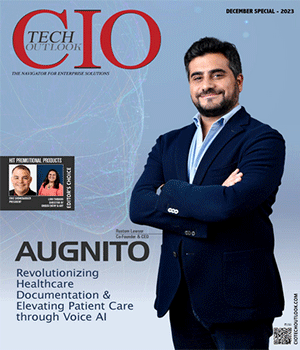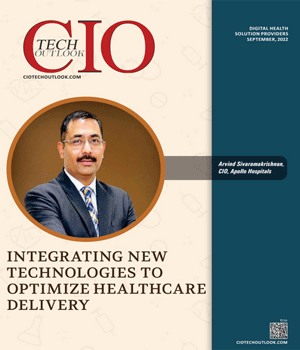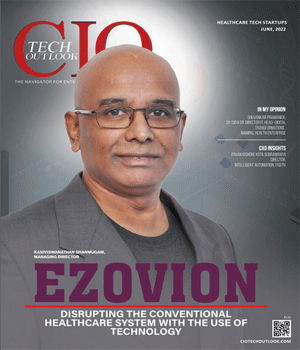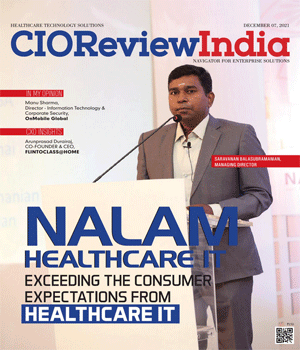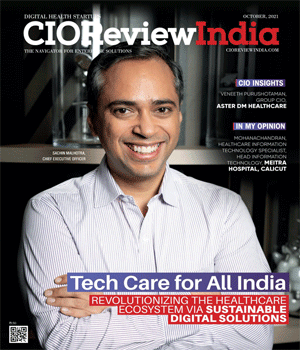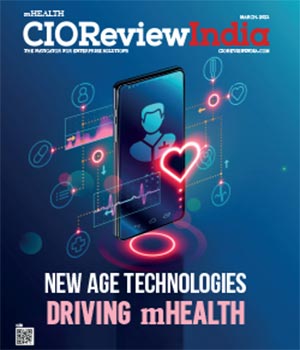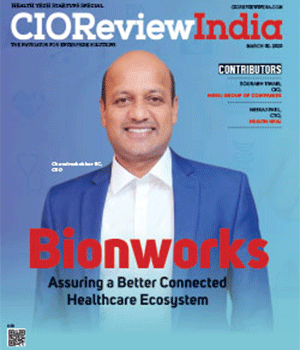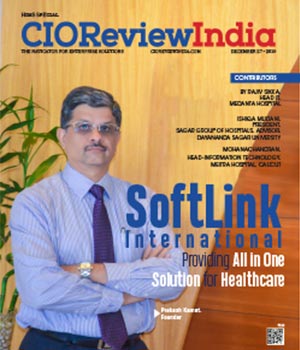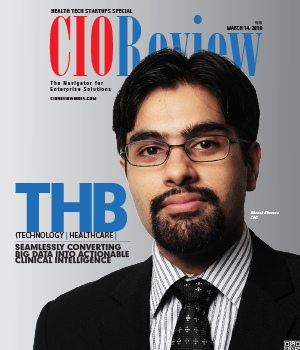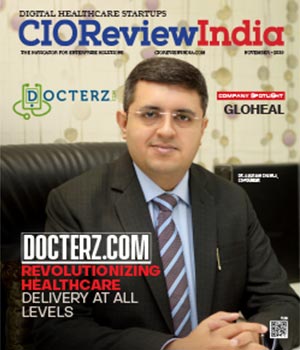
Nanotechnology Accelerates the Evolution of Precision Medicine, Finds Frost & Sullivan
CIOReview Team | Thursday, 03 March 2016, 06:25 IST

The remarkable progress made in medicine and wellness over the last ten years is partially due to the radical advances made in nanotechnology. This technology's core healthcare applications include nanomedicine, nanobiosensing, nano self-assembly and life sciences, especially in the areas of precision targeted therapies, high-sensitivity chips, nano arrays and next-generation biomarkers.
"New nano formulations for targeting tumors, soft nanomaterials for bone regeneration and implantable devices for localized delivery of drugs have all given a huge boost to precision medicine," said TechVision Industry Analyst Cecilia Van Cauwenberghe. "Other innovations such as nanostructured surfaces for biosensors, image-guided implantation of advanced neurostimulators, 3D nanomaterials for stem cell immobilization and intelligent bioactive materials will usher in a new era of healthcare."
Nanomedicine facilitates personalized medicine in many ways. For instance, nano-based diagnostic tests or nano-imaging diagnosis may aid in the stratification of patients and thereby, guarantee personalized, patient-centered therapy. In addition, they make clinical protocols simpler, more efficient and affordable.
The inventions in nanomedicine have mostly benefitted the areas of immuno-oncology, inflammation, neurological disorders, cardiovascular and metabolic disorders, hematology, respiratory and infectious diseases. At present, there are more than 200 nanomedicine products at various stages of clinical trials, and more than 150 commercially available solutions. This number will increase substantially in the next five years, along with the number of market entrants.
There have been parallel trends in biotechnology with the rollout of protein polymers from natural sources. These materials are finding considerable application in the construction of novel nanocarrier systems and the rational design of protein nanoparticles based on the behavior of nanoparticles in the tumor microenvironment.
Although the industry is buzzing with activity, many nanoplatforms developed for cancer therapy have not progressed past Phase II of clinical trials and very few have obtained Food and Drug Administration (FDA) approval. The heavy investments required for R&D and clinical trials, complexity of manufacturing and regulatory challenges has necessitated external funding, at least until the processes are standardized.
"Importantly, nanomedicine has been able to attract sizeable public and private investments due to the escalating prevalence of cancer, orthopedic, cardio/neurovascular and metabolic disorders, and an aging population," noted Van Cauwenberghe. "In addition to large pharmaceutical companies, nanotech-based companies are also demonstrating a keen interest in tapping the healthcare industry."
The remarkable progress made in medicine and wellness over the last ten years is partially due to the radical advances made in nanotechnology. This technology's core healthcare applications include nanomedicine, nanobiosensing, nano self-assembly and life sciences, especially in the areas of precision targeted therapies, high-sensitivity chips, nano arrays and next-generation biomarkers.
"New nano formulations for targeting tumors, soft nanomaterials for bone regeneration and implantable devices for localized delivery of drugs have all given a huge boost to precision medicine," said TechVision Industry Analyst Cecilia Van Cauwenberghe. "Other innovations such as nanostructured surfaces for biosensors, image-guided implantation of advanced neurostimulators, 3D nanomaterials for stem cell immobilization and intelligent bioactive materials will usher in a new era of healthcare."
Nanomedicine facilitates personalized medicine in many ways. For instance, nano-based diagnostic tests or nano-imaging diagnosis may aid in the stratification of patients and thereby, guarantee personalized, patient-centered therapy. In addition, they make clinical protocols simpler, more efficient and affordable.
The inventions in nanomedicine have mostly benefitted the areas of immuno-oncology, inflammation, neurological disorders, cardiovascular and metabolic disorders, hematology, respiratory and infectious diseases. At present, there are more than 200 nanomedicine products at various stages of clinical trials, and more than 150 commercially available solutions. This number will increase substantially in the next five years, along with the number of market entrants.
There have been parallel trends in biotechnology with the rollout of protein polymers from natural sources. These materials are finding considerable application in the construction of novel nanocarrier systems and the rational design of protein nanoparticles based on the behavior of nanoparticles in the tumor microenvironment.
Although the industry is buzzing with activity, many nanoplatforms developed for cancer therapy have not progressed past Phase II of clinical trials and very few have obtained Food and Drug Administration (FDA) approval. The heavy investments required for R&D and clinical trials, complexity of manufacturing and regulatory challenges has necessitated external funding, at least until the processes are standardized.
"Importantly, nanomedicine has been able to attract sizeable public and private investments due to the escalating prevalence of cancer, orthopedic, cardio/neurovascular and metabolic disorders, and an aging population," noted Van Cauwenberghe. "In addition to large pharmaceutical companies, nanotech-based companies are also demonstrating a keen interest in tapping the healthcare industry."
The remarkable progress made in medicine and wellness over the last ten years is partially due to the radical advances made in nanotechnology. This technology's core healthcare applications include nanomedicine, nanobiosensing, nano self-assembly and life sciences, especially in the areas of precision targeted therapies, high-sensitivity chips, nano arrays and next-generation biomarkers.
"New nano formulations for targeting tumors, soft nanomaterials for bone regeneration and implantable devices for localized delivery of drugs have all given a huge boost to precision medicine," said TechVision Industry Analyst Cecilia Van Cauwenberghe. "Other innovations such as nanostructured surfaces for biosensors, image-guided implantation of advanced neurostimulators, 3D nanomaterials for stem cell immobilization and intelligent bioactive materials will usher in a new era of healthcare."
Nanomedicine facilitates personalized medicine in many ways. For instance, nano-based diagnostic tests or nano-imaging diagnosis may aid in the stratification of patients and thereby, guarantee personalized, patient-centered therapy. In addition, they make clinical protocols simpler, more efficient and affordable.
The inventions in nanomedicine have mostly benefitted the areas of immuno-oncology, inflammation, neurological disorders, cardiovascular and metabolic disorders, hematology, respiratory and infectious diseases. At present, there are more than 200 nanomedicine products at various stages of clinical trials, and more than 150 commercially available solutions. This number will increase substantially in the next five years, along with the number of market entrants.
There have been parallel trends in biotechnology with the rollout of protein polymers from natural sources. These materials are finding considerable application in the construction of novel nanocarrier systems and the rational design of protein nanoparticles based on the behavior of nanoparticles in the tumor microenvironment.
Although the industry is buzzing with activity, many nanoplatforms developed for cancer therapy have not progressed past Phase II of clinical trials and very few have obtained Food and Drug Administration (FDA) approval. The heavy investments required for R&D and clinical trials, complexity of manufacturing and regulatory challenges has necessitated external funding, at least until the processes are standardized.
"Importantly, nanomedicine has been able to attract sizeable public and private investments due to the escalating prevalence of cancer, orthopedic, cardio/neurovascular and metabolic disorders, and an aging population," noted Van Cauwenberghe. "In addition to large pharmaceutical companies, nanotech-based companies are also demonstrating a keen interest in tapping the healthcare industry."
CIO Viewpoint
Integrating New Technologies to Optimize...
By Abhrasnata Das
Quantum Shift in Healthcare Driven by...
By Abhrasnata Das
Product Adoption: Realizing The Real Value
By Ashish Pandey, CIO, GSK Consumer Healthcare India
CXO Insights
HIT Promotional Products: Fostering Empowerment...
By Eric Shonebarger, President & Lori Thibado, Director of Order Entry & Art
Addressing the Data Management Challenges in...
By Richa Singh
Elevating Patient Experience with Remote...


